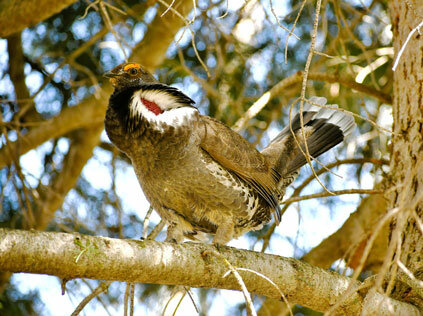
Photo courtesy Barry Knott
This week’s Bird of the Week, compliments of the Weminuche Audubon Society and Audubon Rockies, is the dusky grouse.
In places like ours where elevation influences snow depth and availability of food, some birds are altitudinal migrants which move to lower areas in fall. The dusky grouse is one of the few that bucks the trend and migrates upslope for the winter. It may travel, primarily by foot, up to 30 miles to its winter home in dense evergreen forests, where it shelters in trees and feeds on conifer needles and buds.
In spring and summer, these birds move out of the dense forests and into the surrounding grasslands and shrubby areas to forage and mate. Feeding most heavily in the early morning and at dusk, they primarily consume plant matter including leaves, buds, berries and fruits. Grasshoppers and beetles are added when available.
From mid April to early June, males strut with tail feathers fanned and colorful skin patches on the neck and above the eyes exposed while singing deep hoots to attract females. After mating, the male takes no part in nesting or in rearing young. Females with dependent young aggressively protect them against predators and other female grouse.
Both sexes are chicken-like birds with short bills, short strong legs, and are mottled in brown, gray, white and black. Males have a pale gray band on the terminus of the tail. Most of the year, cryptic coloring and solitary ways make these birds inconspicuous unless you chance to venture too close. Then, in a heart-stopping explosion of flight, one will flush from the ground onto a protective high perch.
Dusky grouse inhabit inland regions of the western US and Canada, from southeastern Alaska, through northwestern Canada and into states which include Colorado. Parts of Arizona and New Mexico, where they are found in high-altitude “sky islands,” are the southern limits of their range. Catastrophic fires and a warming climate are contributing to a disappearance of dusky grouse in this part of their historic range.
For information on events, visit www.weminucheaudubon.org and www.facebook.com/weminucheaudubon/.